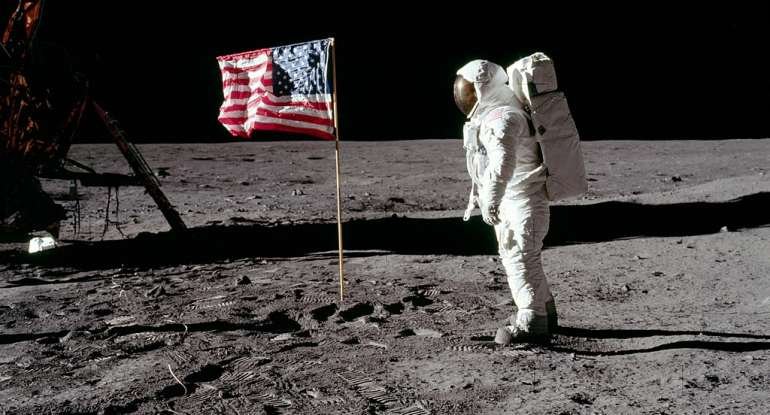NASA-Space Force agreement may pave the way for a military moon base
(Natural News) the National Aeronautics and Space Administration (NASA) and the United States Space Force signed a memorandum of understanding committing them to a broad collaboration that could see the latter have a base on the moon in the future.
The memo is aimed at advancing both civil and military interests in space. It was signed by NASA Administrator Jim Bridenstine and Space Force Chief of Space Operations John Raymond in the context of NASA’s upcoming Artemis mission.
Artemis aims to send the first woman and the next man to the moon by 2024, with test flights for several of its components, such as the Space Launch System rocket and Orion spacecraft, commencing next year.
Through Artemis, the U.S. hopes to eventually build the Artemis Base Camp at the lunar South Pole.
Memo cements NASA-Space Force partnership
Bridenstine said that they also plan to send people to the moon at least once a year from 2024 onward through a space station, called the Lunar Gateway. This is intended to be an outpost in orbit around the moon for rovers, landers and other robots.
Full funding for Artemis, however, has yet to be secured as the House of Representatives has so far only approved about $630 million in additional funds. The agency still needs $3.2 billion to build a human landing system.
The recent memo could help NASA secure the rest of the budget with the involvement of the recently-formed Space Force. Established in December 2019, the branch is under the supervision of the Secretary of the Air Force but functions as a separate, though semi-independent, branch of the military.
The agreement reiterates common NASA-Military interests and positions NASA and the Space Force as partners “in space launch, in-space operations, and space research activities, all of which contribute to the Parties’ separate and distinct civil and defense endeavors.â€
Raymond said he looked forward to future collaborations with NASA. He highlighted the importance of claiming a stake in space for national security and prosperity, as well as for scientific advancement.
“There is power in our partnership,†Raymond said in a statement.
Fuzzy line between militarization and weaponization
Under the Outer Space Treaty, which forms the basis of international space law, celestial bodies such as the moon can only be used for peaceful purposes. The treaty also prohibits the placement of nuclear weapons or other weapons of mass destruction in orbit or on celestial bodies. Yet experts contend that space has always been militarized, if not outrightly weaponized.
John Logsdon, a space historian at George Washington University, told Space.com that the military has always been involved in space exploration from the start.
In 1958, then-President Dwight D. Eisenhower formed the Defense Advanced Research Projects Agency (DARPA) to oversee all military space work and reduce inter-agency bickering. NASA was also established in the same year and effectively shifted attention from DARPA – a boon for the latter’s covert activities. Despite all this, however, Logsdon said that the Outer Space Treaty has kept space from being entirely militarized.
Nonetheless, the pact has drawn “a somewhat fuzzy line†between militarization and weaponization of space, a gray area that likely benefits the security community, opined Joan Johnson-Freese, a professor of national security at the U.S. Naval War College. Therefore, it shouldn’t come as a surprise that nations can dodge sanctions even as 95 percent of all satellites have a “dual-use†purpose.
Comments
There are 0 comments on this post








